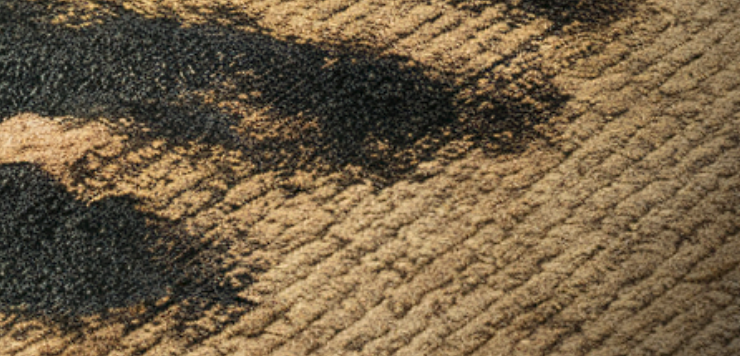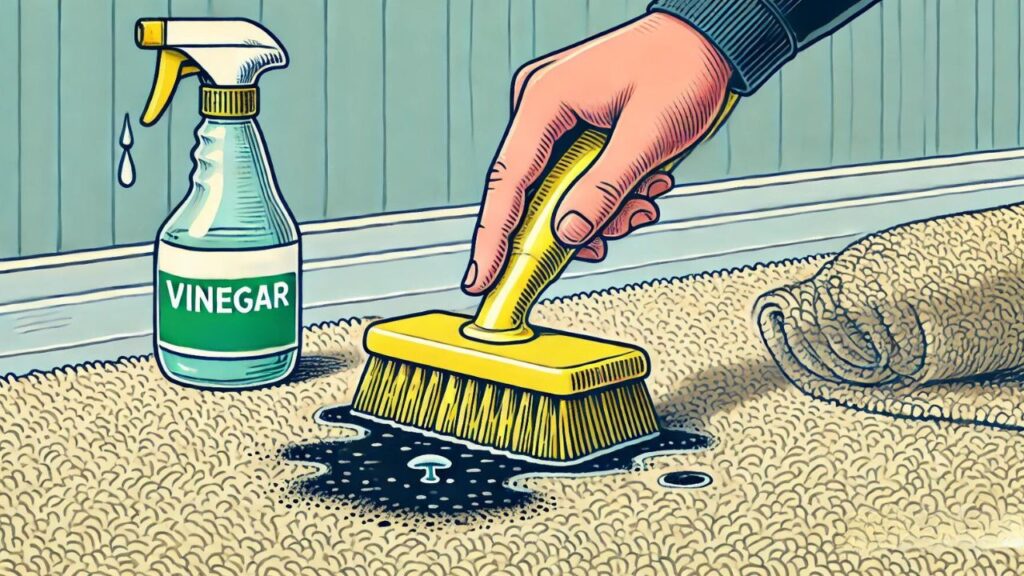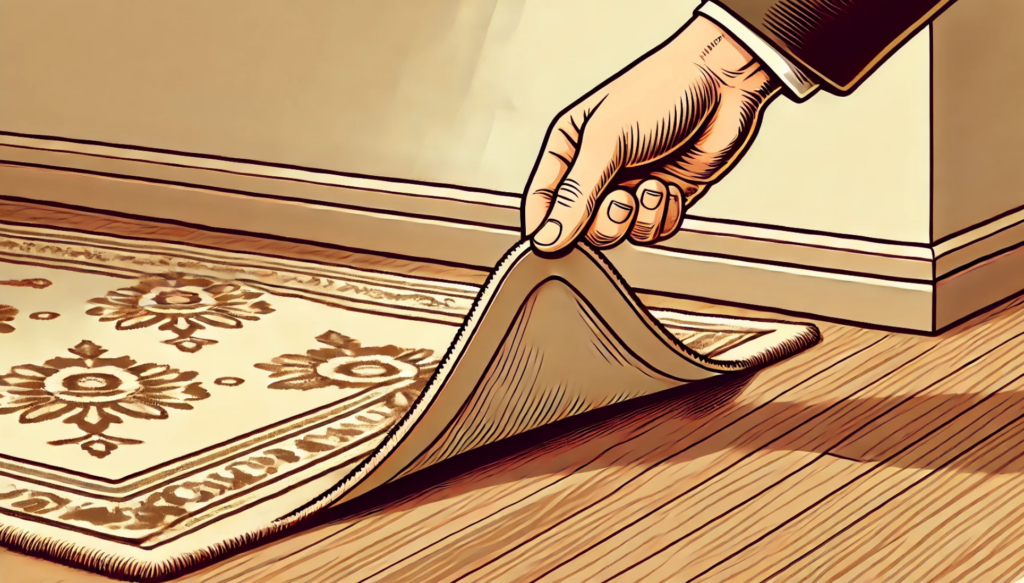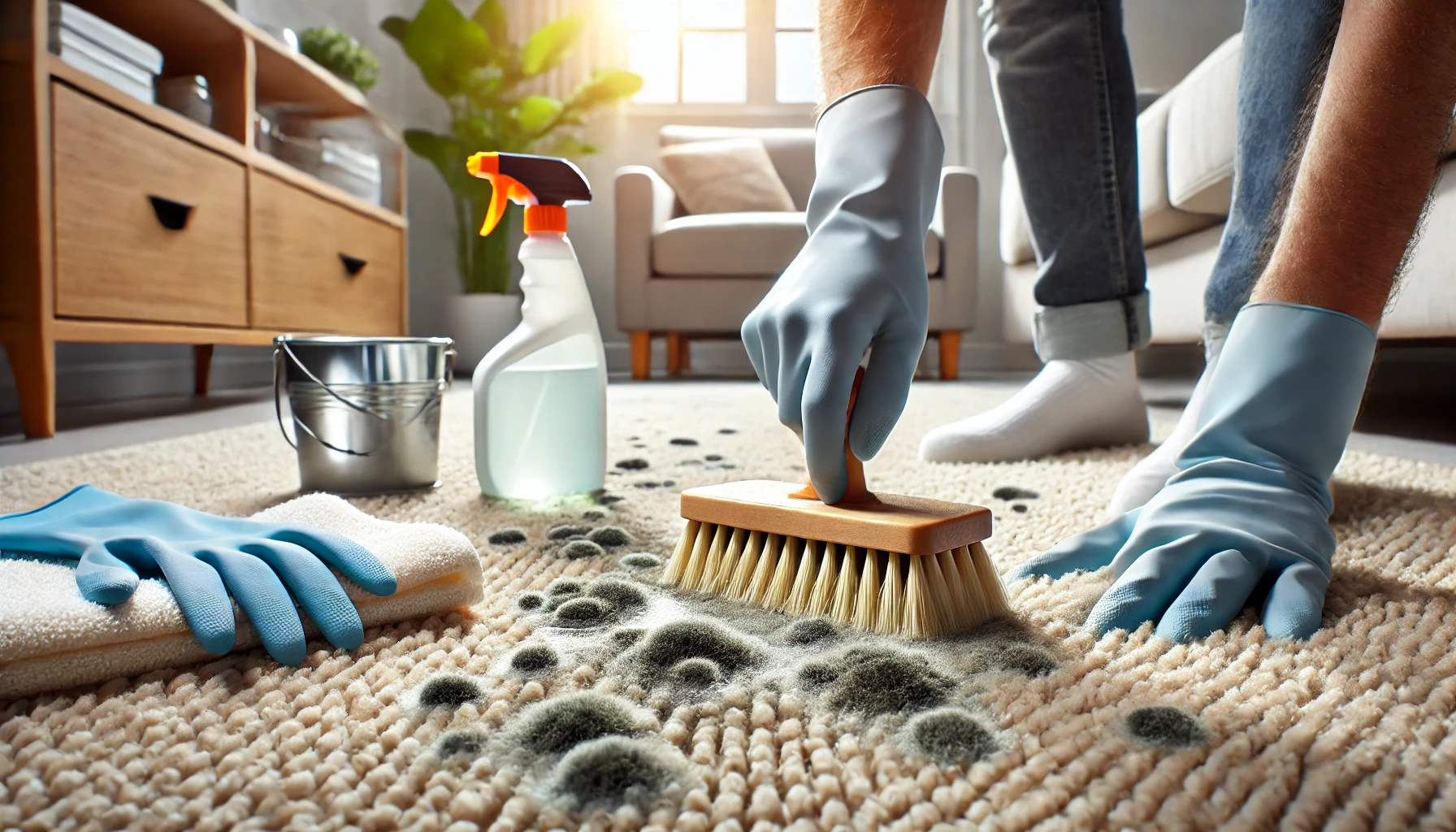Mold On Carpet: How To Get Rid Of It?
TL:DR: To get mold out of your carpet, you must first identify and fix the moisture source causing the growth. You can effectively clean the affected area using undiluted white vinegar in a spray bottle; apply it for one hour, then scrub with a brush. Alternatively, you might use a mixture of 3 parts vinegar to 1 part hydrogen peroxide without soaking the carpet. If you prefer commercial products, you can use Jo-Max mold remover, Mold Armor, or OxiClean, ensuring you dilute them properly. For severe cases, you may try a solution of 10 parts water to 1 part bleach, but be cautious as it can discolor your carpet. After cleaning mold on carpet, you must dry the area thoroughly. Use fans, dehumidifiers, or expose it to sunlight to reduce humidity below 70%. To prevent future mold growth on carpet, you should regularly clean with carpet shampoo or enzymatic cleaners, maintain good ventilation, and use moisture-absorbing products like DampRid in vulnerable areas such as your basement or bathroom.
Mold on carpet is a common problem for homeowners. It appears as fuzzy patches on the carpet and can affect both your living space and health. The smell of mold is often strong and unpleasant.
While mold can be worrying, there are ways to deal with it effectively. This applies whether you’re facing a small area of mold or a larger issue. Knowing how to handle mold on carpet is important, from spotting it to getting rid of it completely.
Regular carpet cleaning helps prevent mold growth. If you notice mold, you might need professional mold remediation. Experts can do mold testing to figure out how bad the problem is.
Sometimes, you might find black mold, which needs special care. Carpet mildew, which is similar to mold, can also grow in damp areas. In this blog post, we’ll cover all these aspects of dealing with mold on carpet. We will also explain how to ensure safe carpet mold removal.
What Are The Health Risks Associated With Mold On Carpet?
Health Risks Associated with mold on carpet include:
- Allergic reactions (sneezing, nasal congestion, itchy eyes)
- Hypersensitivity pneumonitis
- Asthma exacerbation
- Lung infections (especially in individuals with compromised immune systems)
- Fatigue
- Headaches
- Cognitive issues
- Mood swings
- Skin rashes
- Chronic Inflammatory Response Syndrome (CIRS)
- Respiratory irritation
- Potential long-term lung damage
Mold growth on carpets poses significant health risks in indoor environments where moisture and organic materials provide ideal conditions for fungal proliferation. Exposure to mold spores on carpet can trigger allergic reactions in 6-10% of the general population, causing symptoms such as sneezing, nasal congestion, and itchy eyes.
More severe respiratory problems may arise, including hypersensitivity pneumonitis, which can lead to permanent lung damage if exposure continues, and asthma exacerbation resulting in breathing difficulties. Individuals with chronic respiratory conditions or compromised immune systems face an elevated risk of serious health complications, including lung infections.
Mycotoxins, toxic compounds produced by certain molds, can cause additional health problems by triggering inflammatory responses through pro-inflammatory cytokines. Symptoms of mold-related illness are diverse and may include fatigue, headaches, cognitive issues, mood swings, and skin rashes.
Prolonged exposure to water-damaged environments containing mold can lead to Chronic Inflammatory Response Syndrome (CIRS), affecting approximately 25% of the population with genetic predispositions (HLA-DR gene) that hinder effective biotoxin detoxification.
Common indoor molds include Cladosporium, Penicillium, Aspergillus, Alternaria, and Stachybotrys chartarum (black mold). While not all molds are inherently harmful to healthy individuals, the potential health impacts underscore the importance of prompt mold remediation and moisture control in carpeted areas.
What Causes Mold On Carpet?
The primary causes of mold growth in carpets are primarily due to the presence of moisture. Mold requires moisture to grow and can thrive on porous materials such as carpets, which can trap and retain water. Moisture sources that lead to mold growth in carpets include water damage from leaks, flooding, high humidity levels, and condensation.
Water leaks from plumbing, roofs, or even garden sprinklers positioned too close to the home can result in carpets becoming damp. High humidity, often due to inadequate ventilation, can cause moisture to accumulate in carpets, especially in areas like basements and bathrooms where air circulation is limited. Condensation on windows and walls can drip onto carpets, adding to the moisture load.
Mold spores, which are naturally present in the environment, need only a small amount of moisture to begin growing and spreading. If carpets are not dried quickly and thoroughly after becoming wet, mold can start to grow within 24 to 48 hours. This rapid growth can occur even if the carpet does not appear visibly wet but has absorbed enough moisture to create a damp environment.
Additionally, if carpets have been soaked in water containing sewage, oil, or chemicals, they should be discarded as these contaminants can further promote mold growth and pose health risks. In cases of flooding, we recommend to remove and discard moldy carpets, backing, or padding, as these materials are difficult to clean thoroughly.
What Are Signs Of Mold On Carpet?

Mold on carpet is identified as blue-grey or black fuzzy patches, often accompanied by a musty odor. These patches indicate mold or mildew growth, which thrive in damp environments. Other signs include discoloration of the carpet and persistent moisture.
How To Get Mold Out Of Carpet Without Bleach?

There are several effective ways to get rid of mold from the carpet safely. Before starting cleaning the mold on the carpet, make sure room is well-ventilated and wear protective gear, such as mask and gloves.
Use Vinegar To Clean Mold On Carpet
Vinegar is a natural and effective mold cleaner due to its acetic acid content, which inhibits bacterial and fungal growth.
Here is how you can use vinegar to get mold out of carpet:
- Prepare the Vinegar Solution: Use undiluted white vinegar in a spray bottle.
- Apply the Vinegar: Spray the affected area generously and let it sit for at least one hour.
- Scrub the Area: Scrub the area with a brush.
- Dry the Carpet: Allow the carpet to dry thoroughly. Use fans or dehumidifiers to speed up the drying process/
Use Baking Soda To Clean Mold On Carpet
Baking soda is another effective agent for treating mold due to its moisture-absorbing and deodorizing properties.
- Apply Baking Soda: Apply a generous amount of baking soda to the moldy area.
- Leave Overnight: Leave the baking soda on the carpet overnight to absorb moisture and odors (Text 3).
- Vacuum Thoroughly: Vacuum the baking soda thoroughly the next day (Text 3).
Combine Vinegar And Baking Soda To Get Rid Of Mold On Carpet
To enhance the cleaning process, vinegar and baking soda can be used in succession but not mixed together to avoid any chemical reactions.
- Apply Baking Soda: Apply baking soda to the affected area and leave it overnight.
- Vacuum the Baking Soda: Vacuum the baking soda the next day.
- Spray Vinegar: Spray vinegar on the area and let it sit for an hour.
- Scrub and Dry: Scrub the area with a brush and allow it to dry completely.
Use Mold Sprays And Commercial Products
For initial treatment of mold on carpet, mold sprays can be effective.
- Apply Mold Spray: Use products like Mold Armor and 303 Mold Remover to remove mold from carpet.
- Ensure Complete Drying: Ensure the carpet dries completely after application to prevent further mold growth.
What To Do When Mold Penetrates Carpet Padding?

Mold in carpets often goes deeper than what you see on top. It can reach the padding underneath, making regular cleaning methods less effective.
The padding under your carpet tends to hold moisture. This makes it an ideal place for mold to grow. If you spot mold on your carpet, it’s a good idea to check the padding too. Lift the carpet and take a look. Often, if mold has spread to the padding, you’ll need to replace it rather than try to clean it.
Taking out moldy carpet and padding is a big job. You need to protect yourself. Wear a mask, gloves, and protective clothing to avoid breathing in mold spores. When you start removing the carpet, be ready for the padding to be in worse shape than you thought.
After you’ve removed the old carpet and padding, look for what caused the problem. Check for leaks or damp spots in the floor underneath. You might need to use special primers that stop mold before putting down new padding and carpet.
When you’re picking new carpet and padding, think about options that resist mold. Some people prefer closed-cell foam padding instead of the old foam type to help prevent mold in the future. For areas that often get damp, like basements, you might want to look at different flooring options. Waterproof materials or tiles that resist mold could be better choices.
Professional Carpet Mold Removal – Save Your Carpets And Your Health!
While DIY methods can be effective for minor carpet mold issues, extensive or recurring problems require professional intervention. At our mold remediation company, we specialize in expert carpet mold remediation to ensure your home’s carpets are safe and mold-free.
Our team uses advanced techniques and equipment to not only remove mold from carpets but also address underlying moisture issues. Don’t risk your health or valuable carpets – contact us today at (901) 250-0431 for a thorough mold inspection and professional removal. Let us handle the tough carpet mold jobs while you enjoy clean, healthy flooring!

